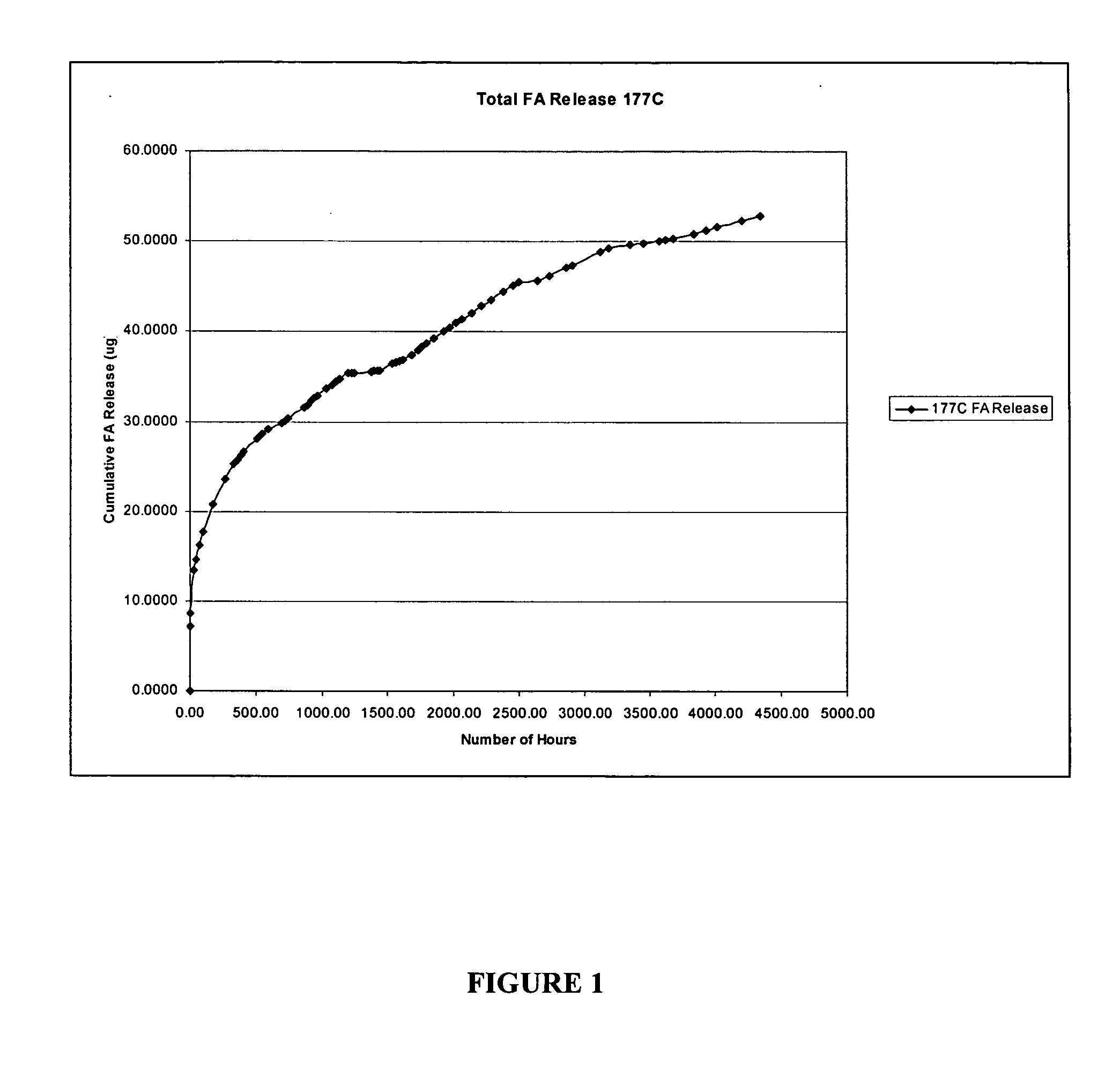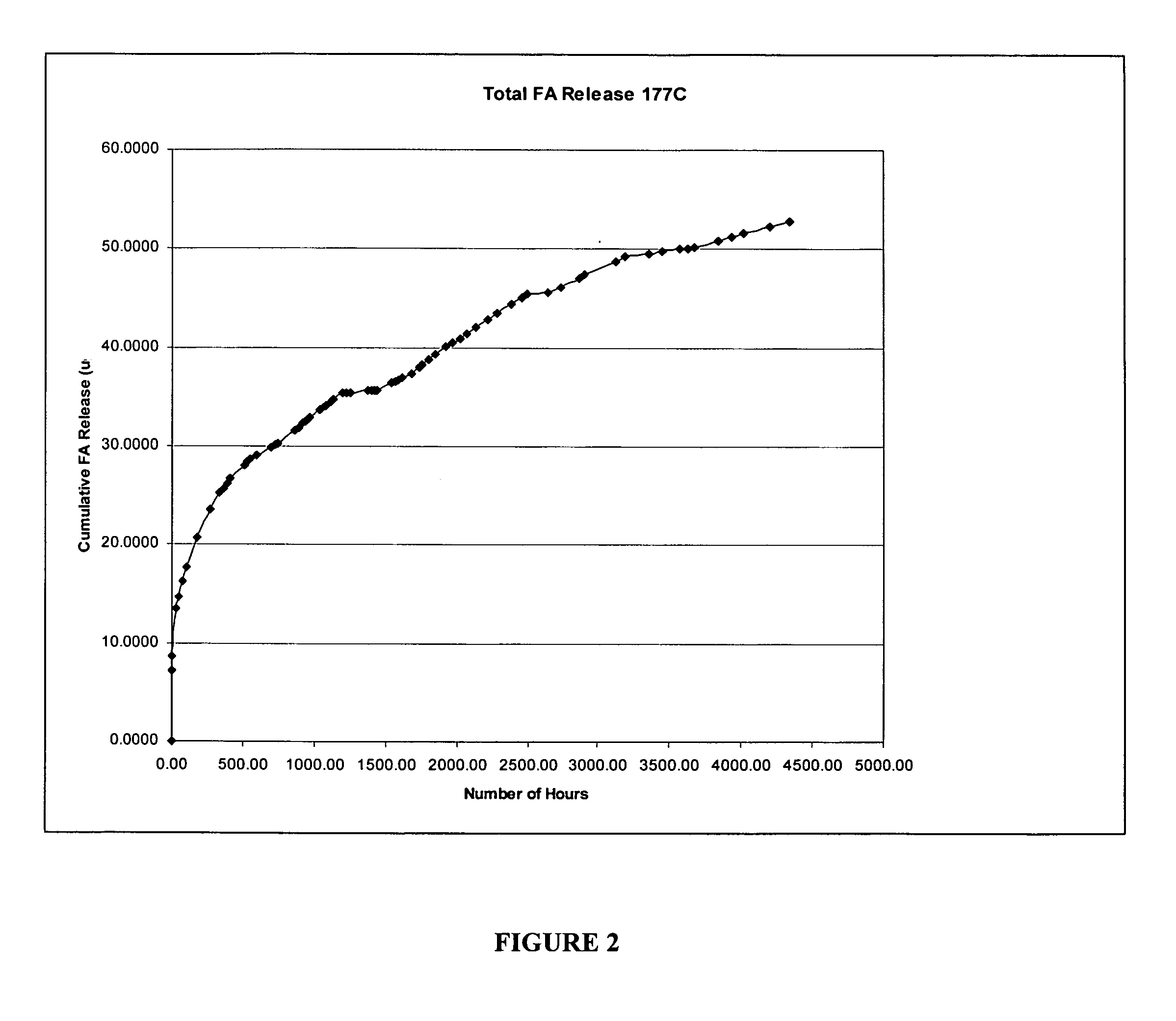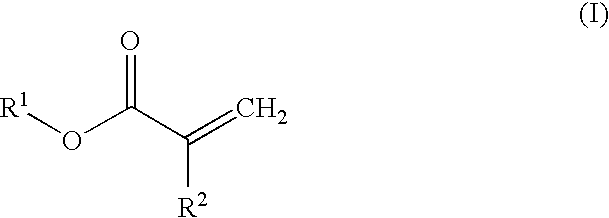Rate controlled release of a pharmaceutical agent in a biodegradable device
a biodegradable device and controlled release technology, applied in the direction of biocide, elcosanoid active ingredients, prosthesis, etc., can solve the problems of low drug level, high initial drug level, and unsatisfactory or practical conventional drug delivery involving frequent periodic dosing
- Summary
- Abstract
- Description
- Claims
- Application Information
AI Technical Summary
Benefits of technology
Problems solved by technology
Method used
Image
Examples
example 1
[0060] To 70 parts of N,N-dimethylacrylamide (DMA) was added 30 parts of methylmethacrylate (MMA), 3 parts of ethylene glycol dimethacrylate (as a crosslinking agent), and 1.0% Irgacure 819 (as a photoinitiator). The solution was added to a Teflon tube (0.5 mm in diameter) available from Boramed (Durham, N.C.) and polymerized using visible light polymerization techniques. The cure conditions consisted of two hours of visible light irradiation. Following the cure, the copolymer sample was removed from the tube resulting in a drug delivery device having dimensions of 5 mm by 0.5 mm. The device was extracted for 16 hours using isopropyl alcohol (IPA) followed by IPA removal using vacuum at 90° C. for two hours.
example 2
[0061] Fluocinolone Acetonide (FA) is loaded into the cured tubes of Example 1 by reswelling the tubes in a 50 / 50 mix of acetone and IPA containing 20% w / v of FA. The tubes are left in the solution overnight with gentle stirring. The tubes are then removed from the solution and air dried for several hours followed by a vacuum dry at 60° C. overnight.
example 3
[0062] The sample as prepared in Example 2 is placed in 3 cc of borate buffer in a sealed glass tube and the amount of FA release is monitored at 34° C. At periodic intervals, 3 cc of solution is removed and replaced with 3 cc of fresh borate. The solution can be analyzed by liquid chromatography for FA. The release rate per day and percent cumulative release can be determined. A zero-order drug release is believed to be obtained shortly after the initial burst.
PUM
| Property | Measurement | Unit |
|---|---|---|
| time period | aaaaa | aaaaa |
| length | aaaaa | aaaaa |
| width | aaaaa | aaaaa |
Abstract
Description
Claims
Application Information
 Login to View More
Login to View More - R&D
- Intellectual Property
- Life Sciences
- Materials
- Tech Scout
- Unparalleled Data Quality
- Higher Quality Content
- 60% Fewer Hallucinations
Browse by: Latest US Patents, China's latest patents, Technical Efficacy Thesaurus, Application Domain, Technology Topic, Popular Technical Reports.
© 2025 PatSnap. All rights reserved.Legal|Privacy policy|Modern Slavery Act Transparency Statement|Sitemap|About US| Contact US: help@patsnap.com



